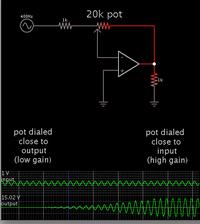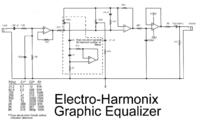T3STY
Full Member level 4

- Joined
- Apr 17, 2012
- Messages
- 239
- Helped
- 24
- Reputation
- 48
- Reaction score
- 24
- Trophy points
- 1,308
- Activity points
- 3,715
I am working at building a simple band pass filter followed by an op-amp circuit used to either boost the band or to reduce it, based on a potentiometer. The gain should be ±6x which means that when the potentiometer is full right a 6x boost is applied; when it's full left a -6x reducing is applied; when it is half-way it should have no gain.
The problem with this is that I'm unable to think of a good configuration for the op-amp to achieve these ranges. I thought at using the inverting configuration and set RF=10K (potentiometer) and R1=5K, which can give me ±2x; although, I don't know how to increase the range up to ±6x.
Can you please show me a way to achieve this? I'm going to use it for a home-made 10 band graphic equalizer and I only need "simple" solutions, not any complicated circuit for hi-fi audio.
p.s. May I assume that 6x means 6db ?
The problem with this is that I'm unable to think of a good configuration for the op-amp to achieve these ranges. I thought at using the inverting configuration and set RF=10K (potentiometer) and R1=5K, which can give me ±2x; although, I don't know how to increase the range up to ±6x.
Can you please show me a way to achieve this? I'm going to use it for a home-made 10 band graphic equalizer and I only need "simple" solutions, not any complicated circuit for hi-fi audio.
p.s. May I assume that 6x means 6db ?






